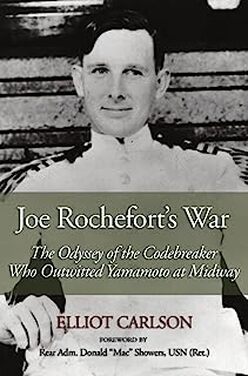 Joe Rochefort won WWII. OK, that is a bit of hyperbole, but if any one man deserves that tag line, he is it. He actually fought two wars: one against the Japanese and one against the Navy. He won both, but beating the Navy would have to wait until after his death. He lead the Hypo (a code word) sigint (signals intelligence) group from a basement in Honolulu. His team cracked the code just enough to allow Rochefort to predict with uncanny accuracy the time and place of the attack on Midway. The Japanese lost four fleet (meaning big) carriers (Kaga, Hiryu, Soryu, and Akagi) to the American's one (Yorktown). If the Americans had lost that battle, resources otherwise marked for Europe would have been routed to the Pacific. The war might have been extended by many months. One could even imagine the US dropping the A-Bomb on its originally planned target, Berlin. Joe Rochefort was a Navy man through and through. He wanted, more than anything, a sea command. He never really got one. Instead, as mentioned, he was assigned to sigint. He has spend some years in Japan learning the language and that, combined with his decoding experience and quick mind made him a good fit. There have been big two movies about Midway. The early one staring Charleton Heston is tolerable, but the latest one is much better historically. If you have seen the latter, you already know a good bit of the story. The new group started off badly. Sigint was not up to speed and they missed the attack on Pearl Harbor entirely, and so did everyone else, but the error would haunt Rochefort. Midway was sigint's revenge. The group was struggling with JN25(c), the Japanese code system. They were able to break the code and win the day, but not without drama. Joe had one albatross which he could not shake… he was a "maverick". A maverick was an officer who has had come up through the ranks but was not a graduate of Annapolis. Many, if not most, Navy officers were snobs and bigots in that respect. Three officers stand out in this regard. Wegner and the Redmans Sr. and Jr.. They wrote derogatory reports about Rochefort through Navy back-channels. Nimitz would discover this late in the game and he was furious. Early on , before much of the Japanese message traffic could be decoded, what little data they had came from Traffic Analysis (TA) of ship movements. This did not yield much and Pearl Harbor was the result. It was interesting to read about the "IBM machines" that proved to be very helpful. The machines were essentially programmable punch card sorters. Sorting was one of the early targets of computing. When the hammer fell on Honolulu, the Americans could intercept radio traffic but they could not tell what direction it was coming from. They could only say that the source was either at one bearing, or that bearing +180 degrees. In other words, their equipment was primitive even for the time, and it lacked direction finding capabilities. Six aircraft carriers attacked Pearly Harbor. Luckily, the US aircraft carriers were at sea. Equally lucky was that the Japanese did not hit Pearl's huge stockpile of oil. After Pearl, the Navy went on a witch hunt and largely blamed Admiral Kimmel. He would face years of criticism before taking his own life. Nimitz took over the Pacific Theater. Rochefort did not escape criticism from the likes of the Redmans. The good news for Rochefort was the increasing presence of sigint in war. The next major battle of the Pacific war was Coral Sea. The battle was a draw, but the Japanese were, for the first time, halted. The next engagement would be Midway where the Japanese would face defeat for the first time. Rochefort and his team had identified Midway as the next target. The JIN's (Japanese Imperial Navy) code for Midway was AF. Washington (the Redmans again) disagreed. Famously, the US suckered the Japanese into tipping their hand on AF. They sent a message "in the clear" that Midway's fresh water condenser was broken. The Japanese noted that AFs water condenser was down. This was Rochefort's second error… he made Washington look stupid. But he was right. The Americans used Rochefort's uncanny predictions to sink all four of the Midway bound carriers. Nimitz famously remarked that Rochefort was only off by five minutes, five miles and five degrees. The rat bastard Redmans later tried to argue that the only reason Rochefort succeeded was because of work that they had previously done. That was BS but they kept at it. When Rochefort was put up for the Distinguished Service Medal (DSM), they nixed it, arguing in part that he did nothing himself, only his people did! By that logic, no officer would ever receive a medal. Rochefort was also able to provide key information relating to the next major contest: Guadalcanal. Rochefort would die before he was finally awarded the DSM (the highest military honor the US gives) by Ronald Reagan. This book was a long read, but I never lost interest. It is the story of a naval battle that would rank up there with Jutland and Trafalgar.
0 Comments
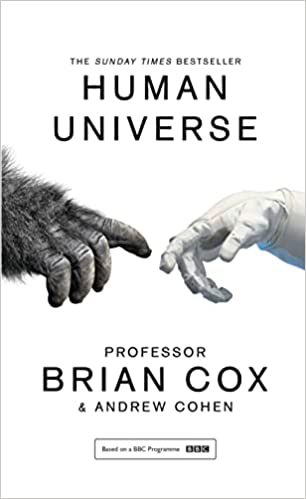 Brian Cox is a few years younger than I. He looks to be much younger. This book is a companion to his TV series. For me, it was largely bubble gum. I am familiar with the history of science, the current state of paleontology, and scientific philosophy, so only a small fraction of the book's thoughts and facts were unknown to me. His writing style is fine… anyone who discusses the Spanish Inquisition and adds that "nobody expects them" is OK by me. Having said that, it would be a good read for the average person who wishes to hear possible scientific answers to most of the BIG profound questions. On that basis, I would say it is a fine read. 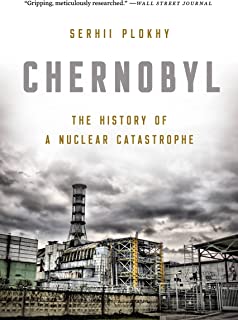 On April 26th, 1986, the Chernobyl nuclear reactor number four exploded. The explosion lifted a more than 200 ton "bio-shield" named Elina into the air, exposing the reactor's core. If you have seen the docudrama about Chernobyl, then you are already aware of much of the contents of this book. I wanted to read it to better understand the physics. What I got was a better understanding of how the worst nuclear disaster in history could have happened at all. The short answer is that the USSR was crumbling, inefficient, and corrupt. The USSR was most concerned about saving face, extolling Soviet science as the best in the world, and doing everything on the cheap. The result was the second major nuclear disaster in the USSR. A weapons-grade plutonium producing reactor in Siberia had a similar meltdown during the height of the cold war, but the USSR was able to keep it secret. In their arrogance, the USSR opted on a graphite moderated reactor design, rather than the water moderated design used everywhere else in the world. They eschewed the giant concrete containment vessels that Western eyes associate with nuclear reactors... thinking themselves too smart, and their reactor designs so safe, that they would never have an accident (again). The Soviets built 10 RBMK (in Russian: High Power Channel Reactor) reactors. These reactors were built by a system that had to deal with vendors who routinely supplied sub-standard goods. Seventy percent of one major vendor's goods were faulty. On one occasion, the Chernobyl plant out-performed its quota by 10%. This was accomplished in part by delaying routine maintenance operations. This sort of thing happened all the time. Here is my major take-away from the book: the Chernobyl accident lead directly to the collapse of the Soviet Union three years later. Ecological activism became associated with anti-nuclear and anti-Soviet feelings. Lithuania and, most importantly, Ukraine, wanted out. Ukraine got out on December 1, 1991. The explosion of reactor number four happened during a test of some of the reactor's emergency systems. The fatal test would, among other things, test the SCRAM (Safety Control Rods Activation Mechanism) functions. To do this, they wanted to simulate power losses on some equipment, such as safety equipment. If you think that sounds stupid, you are right. What happens next is complicated. The boron control rods are tipped with graphite. The boron slows the reaction down and graphite speeds it up. So as the rods go in, the power goes up, and then down. Another accelerating effect involving cavities full of steam (called the positive void effect) also increased power output. Power output went from 200 MWts to 30,000 MWts in just a few seconds. Then it exploded. What happens next was well covered in the docudrama. Chunks of red hot, and extremely radioactive, graphite were lying about on the ground. Fire fighters did not know what to make of them. For some who got too close, it would mean their death. Even remote controlled vehicles could not stand the radiation. Initially, the powers that be relied on dosimeter readings, which indicated a tolerable amount of radiation. They downplayed the severity based on that. But what they chose to ignore was that the numbers that the dosimeters were giving were the maximum they could register! When better meters were used, the true picture came into focus, namely that the radiation was well into the dangerous/lethal zone. Another problem was the water table. More Russian arrogance at work… they should have chosen a sight where ground water was not an issue. If the reactor got to the ground water, another explosion could be expected, along with radioactive water seeping into everything. In a heroic act, miners managed to tunnel under the reactor and freeze the ground solid with liquid nitrogen. They invoked a common Soviet saying: "Who, if not we?" All things considered, the story of Chernobyl could have been much worse. A whole town, many small villages, and thousands of acres of farm land was contaminated in Ukraine, Russia and Belarus. But all told, immediate deaths could be counted on one hand; and the final total, which includes cancers caused by radiation, and guesses on future death tolls is between 4,000 (from the UN) and 90,000 (from Green Peace) souls. I would like to think that the Chernobyl disaster had some positive impacts. As mentioned, it was the catalyst of the fall of the USSR (which Putin is trying to resurrect). No new RBMK reactors are being built. The original plan was shut these reactors down, but that idea was quickly modified when the practical realities were considered. People need power to live. The interior of the Chernobyl sarcophagus will be deadly to human life for 20,000 years. This was a very easy read. It is very well written. The author is aware of the avalanche of Russian names the book presents. He is careful to remind the reader of each players title and position whenever an obscure Russian re-enters the narrative. It has an excellent index. A note about radiation: The units have changed over the years. The old measures are the curie, rad and rem. They are replaced by the becquerel (GBq), gray (Gy), and sievert (Sv). They respectively measure the emitted radiation, the amount of radiation absorbed, and the biological damage done. Honor Before Glory; Scott McGaugh; 2016; Da Capo Press; 220 pgs, bibliography, notes, index29/12/2022  The 442 Infantry Regiment was, pound for pound (i.e. pro-rated for size), the best and most decorated fighting unit in the European Theatre. Two dozen Medal of Honors; Seven Presidential Unit Citations; 9,000 Purple Hearts; 6,000 Bronze and Silver Stars, and more. More than one medal per man! They gained fame for saving the WWII "Lost Battalion" of the 443 Infantry Regiment after they were surrounded by Germans for over a week. This book is about the rescue of the Lost Battalion and who did the rescuing. In addition to its battle record, the 442nd was unique in another way. The 442 was a segregated unit. If you are thinking they were black… close but no cigar. They were all Nisei, aka Japanese Americans, except for the officers, who were all white. All were volunteers, most from the Japanese concentration camps that were set up by the bigoted US government after Pearl Harbor. Many were from Hawaii. Canada segregated the entire Japanese population of British Columbia during the war, so we should be humble. Like the segregated black units, the Nisei were shit on by their country, but fought for it anyway. If you are a movie buff, there is the 1951 film about the 442nd's exploits called "Go For Broke" (the unofficial Regimental motto) starring Van Johnson. It is hard to find except on DVD. I recommend it. The Nisei had to beg to be allowed to fight. Finally, FDR made a speech where he described what a true American was, and how all Americans had the right to fight. He did not mention that those same Americans he was referring to were stripped of their most basic rights because of US bigotry. The 442 served in Italy with distinction. On October 24, 1944, the unit found itself in the Vosges Forest in France. In two months, the Battle of the Bulge would begin. The Vosges has Germany to the north east and Switzerland to the south east. The 441st Texas battalion was cut off and surrounded on hill 595 (595 is the hill's height above sea level). The Vosges is a very dense forest, featuring 45 degree hills and continuous cold rain and mist. The Germans were defending their homeland's border. They fought fiercely and bravely. Both sides were under-supplied, and neither side knew how poor off the other was. Both sides faced the same issues: miserable weather, foul water, little or no food for days, dwindling ammo supplies, and limited ability to treat wounded. For the Americans, one of the biggest risks was exploding trees. When hit with an artillery, trees splintered into a thousand flying knives. The 442nd was assigned the task of rescuing the 441st Texas Battalion. The German's were one thing that demand attention. Others include trench foot; acts of enormous courage and sacrifice; lack of everything (food, water, medicine, bandages etc); and friends dying every day as they fought to free the 441st. The biggest problem was resupply for the trapped Texans. Planes dropped gas tanks full of supplies that landed in enemy hands as often as they did friendly hands. Artillery was used to shell the Americans with supplies… a very dangerous procedure, as you might imagine. One soldier was killed by a can of cheese from a exploding resupply shell (the resupply shells had small charges in them). This book, like many others, documents the conditions of war… hell on Earth. There are many tear-inducing moments in the narrative. Perhaps the most galling thing about the battle was the actions of Major General John Dahlquist. He was an asshole of major proportions. Every few hours, he would get status information from the 441st and 442nd. Low on everything, fighting strength diminished, many untreated wounded etc. And every few hours, Dahlquist, the overall commander in the area, would give orders to do what he was just told was not possible to do. On several occasions, a junior officer flatly refused to carry out his orders, as they amounted to suicide for his men. The 442nd Nisei hated Dahlquist and respected their commander, Gordon Singles, for telling him to shove off. Shortly after the combat in the Vosges was over, Dahlquist assembled the 442nd for review. He was outraged that so few of them showed up... until he was informed that what he saw was all that was left of the 442nd. Dahlquist got in trouble later in the aftermath of the war for cozying up to Goering. IOW: he liked Germans better than he like Japanese Americans. Dahlquist's bigotry was baked into the army at the time. Some years later, Dahlquist attended a parade review of the 442nd. Dahlquist approached Singles in front of his men. Singles snapped to attention. Dahlquist held out his hand, suggesting that perhaps now they could bury the hatchet. Singles said nothing and held his salute until Dahlquist withdrew his hand and returned the salute. A perfect take-down. The 442nd remembered. Even after the war was over, things had not changed. Some west coast States tried to keep the Japanese from returning to their "homes" (in quotes, because their homes had been sold)! Many soldiers in the 442nd were put forward for medals. From the Congressional Medal of Honor to the Purple Heart, and everything in between. But after the war, most of the 442nd's medals were downgraded. This was blatant bigotry in action. It was not until Presidents Reagan and Clinton that some of these sins were redressed. Reagan paid reparations for stolen property and Clinton addressed the medals issue. Unfortunately, most of the major medal recipients were already dead. The last died about 10 years ago. 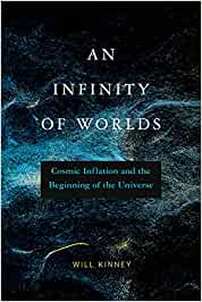 This book deals with the biggest questions of all about the biggest thing of them all… the entire universe of universes, or if you prefer: life, the universe and everything. These write-ups are really just my notes on what I have read. In many cases, the concepts are so large that my notes cannot do them justice and you must read the original source. This just such a case. This book contains some very large, deep ideas that I do not really understand and my notes cannot adequately reflect. This book's index is quite poor. A pet peeve of mine. Some basics the book discusses:
At this point, the book lays out a cosmic timeline beginning from a very hot and dense start 13.7 billion years ago, till now. Time starts in the Planck Era: from 10 to the -43 seconds to 10 to the -32 seconds. It goes on from there to 6 billion years ago when matter became less dense than energy and cosmic growth stopped decelerating and started accelerating. Which brings us to today. It is very hard to summarize a book that deals largely in abstract ideas, but here goes.
Another interesting idea about time is discussed. We see an infinite future, but a finite past. This is asymmetric. But if you use a logarithmic clock, time appears infinite in both directions. The descriptions of the many universe hypothesis is fun and intriguing, but as the author points out, these ideas are not scientific in that they are unfalsifiable. The title of the book comes from Giordano Bruno who said, shortly before he was burned to death for heresy: "God is infinite so his universe must be too… He is glorified not in one, but in countless suns, not a single earth , a single world, but in a thousand thousand, I say an infinity of worlds." No discussion of the universe and how it came about is complete without mentioning the anthropic principle. One way to look at the multiverse is as a beer with many bubbles. Each bubble is a universe, possibly with its own physics laws. The multiverse, as implied by inflation, also addresses the fine tuning argument (the idea that the universe was made just for us, or vice versa). In its simplest form, the anthropic principle is basically a tautology. The universe is what it is because we are here to observe it. I.e.: the universe implies us, and we imply the universe that made us. There are three main objections to the anthropic principle. 1) It is not scientific because we are cut off from the other bubbles. 2) The anthropic principle does not say what parameters in each universe can change, and which cannot. 3) The idea is based on a narrow interpretation of "life" This book is very recent so it should represent our best ideas of how it all came to be. These are literally the largest ideas that the human mind has ever contemplated. Five thousand years ago, somebody speculated that we were super-duper special, and that we, and everything we see, was all created for us by a benevolent god. That idea is forgivable and a load of rubbish. As we have grown in knowledge, our specialness has all but disappeared. I find it utterly remarkable that we live in a time when we can ask these types questions and actually get answers. Of course, most of those answers are negatives, often in the form of "close, but no cigar". The good news it that we are getting new data every day (e.g.: the James Webb telescope, CERN, LIGO, COBE, Chandra etc)), , and these data underscore our ignorance and drive us forward. History of Warfare, A; John Keegan; 1993; Vintage Books; 393 pgs; References, Bibliography, Index18/8/2022 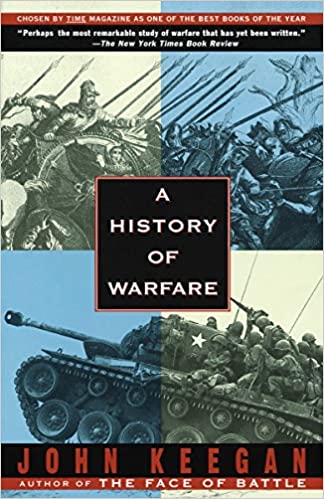 This is another book that cannot be summarized. It is long, uses a small font, and is information dense. Since human history and war cannot be separated, you can view this book as a history of humanity through the lens of war. The book opens and closes with Clausewitz. Clausewitz was a well known theorist about war and he argued famously that war was an extension of politics by other means. This book disagrees. Keegan points out early that wars are often fought over religious issues, and that Muhammad, unlike Christ, was a man of violence who preached jihad. Islam is divided over two caliphs (successors to Muhammad). They disagree on who is in charge and the basic aims of Islam, which is often religion at knifepoint. When guns were introduced to the battle field, many thought them unworthy of a soldier. In fact, Japan was so appalled at the idea that a common man could get a gun and kill man of high stature that they banned guns outright in order to perpetuate their close quarter combat military society. That all changed when the US sailed a gun ship into Tokyo harbor. Throughout history, war and technology moved hand in hand. With each new weapon came new tactics and new goals. The history of war is the history of empires and peoples… and there have been a lot of them through the ages. I had never heard of many of them, such as the Yanomamo of Peru: they were called "the fierce people" and were known for stylistic forms of ritual combat. War as we know it started with the invention of the bow and arrow (man's deadliest innovation to date) . The bow is a simple machine used to store muscle energy as mechanical energy and quickly release it. The bow was a true stand-off weapon... a game changer. Later, the composite bow was invented. These bows shot arrows further and faster, were much smaller than their predecessors, and could be wielded easily from horseback. . The first written history of war comes from Sumerians wall reliefs. Sumer was the land between the Tigris and Euphrates rivers around 5,000 years ago. The next innovation was the chariot. One may wonder why the Egyptians et al did not ride horses into battle. Horses have changed a lot due to selective breeding. Five thousand years ago, horses were small. They were well muscled in the rear but could not carry much weight on their forelimbs. This meant that a rider had to sit way back on the horse, making control difficult. But horses were good at pulling things, like a chariot. Later in history, the chariot was abandoned for the mounted cavalry soldier. Fortifications are discussed at some length. Fiction has made much of siege engines vs. fortifications. In reality, fortifications nearly always won out in a siege... until the age of gunpowder. Much is made of the clash between the nomadic horse peoples of the steppe (e.g. Mongols) and the settlers and farmers of cities and towns. There really was no way for them to coexist as they both competed for the same resources. Another group of well known raiders, the Vikings, used ships rather than horses. The book also goes into depth on armies: how they are formed, manned, fed, organized etc. Armies are built in many ways: through enslavement, conscription, and through volunteers who are rewarded in some way, such as citizenship. Rome was built that way and Rome had the first body of professional fighting officers in history. The introduction of iron was another game changer. Iron was strong, but very heavy, so most armor remained made of bronze. Cannons of bronze were supplanted by larger cannons of iron. Gunpowder allowed iron shots to fly horizontally which allowed cannons to undermine defensive fortifications. Siege engine shots were lobbed and generally dealt ineffective glancing blows. There is so much information in this book that it is best used as a reference work. Subsequent chapters discuss logistics and supplies and, of course, the modern wars that shaped our world: The US Civil War, the French Revolution, WWI and WWII, the introduction of nuclear weapons, and so on. 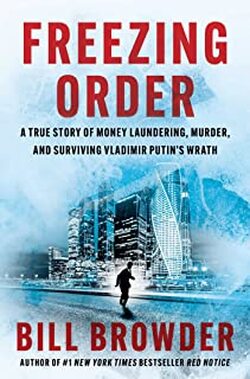 My main frustration with this book is that it has a lot of players and no index! There is no excuse for the lack of an index in today's world. As it is, for example, if you had forgotten who "Vladimir" is in the book, you had to read-back in the book to find a mention that defines him. This can be very frustrating when some players are referred to by both their first and last names alone. This is the sequel to Red Notice, Browder's excellent book on a subject that has had a huge influence on international politics… namely the Magnitsky Act. This law, now adopted by more than 34 countries, including Canada, allows countries to seize the assets of international criminals and the sponsors of terrorism. Putin is the big fish in that pond, and he is worried. Much of his wealth resides outside Russia. The book starts well before the book Red Notice was published and could be characterized as a diary of Browder's experiences as he published the book and pushed the Magnitsky Act around the world... And, of course, Putin's attempts to get him. If you have not read Red Notice, you should do so before you read this book. Spoiler alert: if you have not read it but plan to, stop reading this now! Browder set up a investment company in Russia which made millions. Putin stole the company and 230 million dollars, accused Browder of stealing that very same money, threw Browder's lawyer Sergei Magnitsky in jail, and tortured him to death. Browder created the Magnitsky Act to punish Russia and has made it his life's work. Putin wants him dead. The book reads like a Hitchcock movie script (think The Man Who Knew too Much, or North by Northwest). The innocent victim (Browder) goes to a lawyer to get help fight to the Russians. The lawyer's name is John Moscow (really!). He digs into Browder's case and helps him. But months later, he was working for Putin! John Moscow used his inside knowledge to harass Browder in an attempt to get him onto Russian soil. This is against all legal tenets but it took many court appearances to get the western courts to eject Moscow from the case. One lesson of this story is that the law, designed to protect the innocent, can be turned into a deadly weapon in the wrong hands. Moscow is a perfect example of what everyone hates: a crooked lawyer. The story goes on, at times almost comically, in its cloak and dagger clichés. The clichés turn out to be real. Another minor observation: the Russians (i.e. Putin) like to poison people, but they are really not very good at it. Quite a few have survived being poisoned, including a player in this story. Putin should stick to straight up assassinations, like Boris Nemtsov who was shot eight times right outside the Kremlin. A mystery truck had pulled up and stopped, blocking the surveillance camera's view. That story also figures in this James Bond plot. The original 232 million dollars had exploded into 232 billion, much of which went through Danske Bank. As a person of Danish descent, this was disturbing to me, but the Danes wasted no time in busting the bad guys when this crime came to light. I have nothing but admiration for Browder. He leads the life of a fugitive while fighting for a just cause. The madness of Putin does not stop with Bill Browder. Now he is waging a war he cannot win in Ukraine. 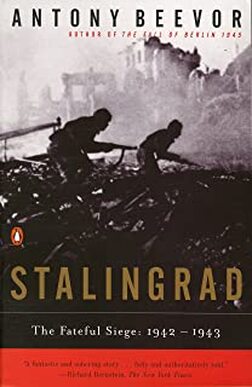 Another book about the first major defeat for the German Army of WWII. It is often called the turning point of the war. I would suggest that the war was lost in late 1941, when Hitler declared war on the US two days after Pearl Harbor, and the German Army was halted one hundred miles from Moscow. There are a lot of good books about this battle, and this is one of them. I will not summarize this book overmuch as I have already discussed the battle in other book notes. Four million men invaded Russia. The German's were famous for their armored Blitzkrieg (lightning war), but they still used more than 600,000 horses! Oddly, had this not been the case, the battle of Stalingrad might have ended a little sooner. When you run out of ammo, you cannot eat your tank. Every German horse at Stalingrad ultimately became soup. Stalin disowned his own son because he was captured by the Germans, which made him a traitor. The Russian railroad tracks were a wider gage than the rest of Europe. The tracks had to be narrowed or the goods transferred to a new train. This was very costly for the Germans. One German (Reichel), against orders, took a copy of the battle plan with him on a recon flight. He was shot down, and the Russians got the full skinny on what the Germans had planned. Stalin was too paranoid to take it seriously. Both Stalin and Hitler loved to issue "Not one step back" orders. To Stalin's credit, he was smarter than Hitler. It took some doing, but Stalin finally realized that allowing an army to retreat could save the army. Not so for Adolph. His stubbornness got the entire 6th Army killed or captured. During the harsh battle, one Russian was shot in the hand. He bandaged it and went to report that he had been wounded. He was taken out and shot. Why? Because he had obviously shot himself and had bandaged the wound to cover up his misdeed! Another Russian was captured, escaped and returned to his unit, only to be shot as a deserter. During the summer, Hitler was told that the Soviets were producing 1,200 tanks a month. Hitler was outraged, in that he knew the sub-human Russians were not capable of those production levels, In fact, they are producing 2,200 a month. In 1942, Russian aircraft production almost doubled. Hitler famously promoted General Paulus to Field Marshal in the hopes that this would cause him to kill himself, rather then be taken prisoner. He did not kill himself. Hitler had actually created four new Field Marshals, including Paulus, as a publicity stunt to distract from the disaster that was Stalingrad. The last German broadcast from Berlin was a faked message from Stalingrad. It was heard in Stalingrad and outraged the those few soldiers who still cared. We are watching a terrible conflict unfold in Ukraine. People are suffering and dying needlessly. And as awful as all that is, it is nothing compared to the hell on Earth that was the Battle of Stalingrad. About 10,000 civilians survived the battle. 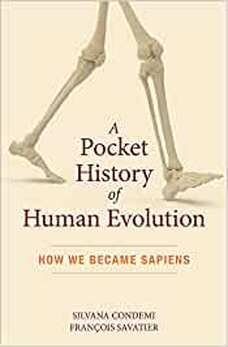 I have very little to say about this book. It is a concise summary of our current understanding of human evolution, from the first words and stone tools to our modern tribal, warring, world. It is only 128 small pages long and summarizing a summary does not leave much but the title. When was fire tamed? How did we become bipedal? These and many other questions are answered, although not always with great accuracy. That is to say, there is still much to learn. The evolution of humanity is complex. There was a lot of interbreeding which just makes things more complex. Short though this book is, each paragraph contains something profound to think about. 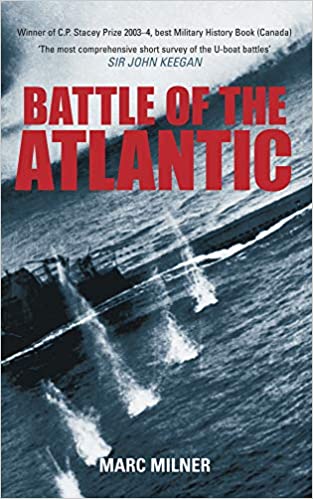 The Battle of the Atlantic (BoA) spanned almost the entire war, making it the longest war battle (any war) by a considerable margin. I found this book very informative, at least as far as ASW (Anti-Submarine Warfare) is concerned, and it has a large number of excellent photos, some only rarely ever seen. The battle was a classic example of move versus counter move, and technology versus counter technology. Britain won the technology wars with the aid of the USA. But in my mind, the real heroes of the war were the Canadians. Because the BoA lasted so long, it is hard to sum up neatly, or even find a specific turning point. If you saw the movie Greyhound w/Tom Hanks, you should try to forget it. While the ASW was pretty authentic, the idea of a American rookie destroyer captain leading three British escorts in herding a convoy across the Atlantic only one month after the US entered the war is a non-starter. The screenplay was written by Tom Hanks, and he succumbed to the lure of making the war all about the Americans. Admiral King ran the entire US Navy. He did not like the Brits and dismissed any and all of its sub hunting experience as twaddle. The British had been fighting the BoA for well over a year at that time. They had developed standards of practice that proved very effective. The US would enter the BoA in earnest after they started getting their own ships sunk off American waters. A much better, hard to find, movie about Canada and sub chasing is called Corvette 225 with Randolph Scott. It was a US production, but was very accurate in its depictions of Canada's role. In the BoA, the heroes were Canada (in part because we did more than our fair share) Britain, and the US… in that order. The Canadian Flower Class Corvette was a major player on the BoA. It was a small, single screw, sub chaser that played a large role. You would not want to be on one. Canadian destroyer crews used to joke that Corvette crews should receive submariner pay since its Corvette's forecastles spent so much time under water. Later versions enlarged and redesigned the forecastle to ease this problem. Later, twin screw versions of the Corvette were built and dubbed Frigates. The major technologies for the allies at play in the battle were: Huff Duff (HF/DF or High Frequency Direction Finding): Huff-Duff detected radio signals and calculated bearings and ranges. The Germans did not believe that the Brits could put radio direction equipment on a boat as it would be too bulky. This error in judgment would cost them. ASDIC (aka Sonar): This technology improved with every passing year. Active sonar used the infamous "ping"; passive listened for screw noises. RADAR (10cm and 3cm wavelengths): Radar at sea was a huge advantage. The shorter the wave length of the radar signal the better. It is a basic law of physics that you cannot see anything that is smaller than the wave length of the light being used. Radar is a kind of light. If you want to see a periscope, 10cm radar would catch it. If you want to see a sub snorkel, you need shorter wave lengths. Radar equipped airplanes would sink more submarines than any other mode of attack. Leigh Lights: Once an airplane, often a Sunderland flying boat, saw a sub with radar at night, it would sneak up on sub until they were almost on top of it, then turn on their very bright Leigh Light mounted under the plane flooding the sub in light, and then drop contact bombs. This meant that German subs were vulnerable when running on the surface, even at night. Running on the surface was required to recharge the sub's batteries. Air Dropped Acoustic Torpedoes: Of course, a sub chaser cannot launch an acoustic torpedo against a submarine because the ship itself is too noisy, as are the other convoy ships. But an airplane can, which they did to great effect. A typical scenario would be: A Sunderland or Liberator spots a sub radar during the day; it attacks; the sub spots it and dives; the airplane swoops in and drops its torpedo; which chases the sub into the deep and kills it. Hedgehog and Other Contact Munitions: The hedgehog was a large number of forward launched, small, fast sinking, contact bombs. A depth charge is a large explosive which can sink a sub from 20 feet away. The hedgehog was a small contact bomb. If it hit the sub, it would hole the pressure hull, and kill the sub. SQUID: SQUID was a single powerful shallow water, forward launched, depth charge that was slaved to the ASDIC signal of the sub. At just the right time (as calculated by a mechanical computer), as the sub chaser bore down on its target, the SQUID would be fired at the diving sub and explode at a depth based on the ASDIC signal. They were very effective. Shallow Water Depth Charges: Aircraft had no use for the heavy ship borne depth charges designed to sink a submarine at depth. What they needed was shallow water depth charges that could be dropped on a diving sub. They arrived later in the war. Code Breaking: Alan Turing and his code breakers cracked the German naval enigma machine codes. The Germans famously added a fourth rotor to the enigma machine, and Bletchley Park went silent for a year. After that, they were back in the cat bird seat, often cracking German intercepts before the Germans could. That is, they knew where German subs were better than the Germans. The code breakers of Bletchley Park saved thousands of lives and millions of tons of shipping. The major technologies for the Germans at play in the battle were: Subs, and Lots of Them: Compared to a ship, or especially a loaded ship, submarines were cheap. The Germans produced hundreds of Type VIIs (smaller, inshore subs); Types IXs (larger ocean going subs, the German mainstay); milchkuhne ("milk-cow") resupply-at-sea subs; and Type XXIs (equipped with larger batteries and the snorkel). U-boats were literally numbered on their coming towers (the index of this book, under "U" for U-Boat, is very long with entries like U-751, U-752 etc)), and at the wars end, 1,162 had been built! The Snorkel: The snorkel is just what it sounds like. Subs burned diesel and diesels need air. Some Type IXs were retrofitted with snorkels. The war ended in early May, yet in March, 1945, German industry still managed to pound out 100 type XXI subs! But it was too little, too late. Metox: Metox was a detector that warned subs if they were being scanned by radar. It could detect 10cm radar, but not 3cm until well into the BoA. GNAT (German Navy Acoustic Torpedo): When the first such torpedo was fired, it was plain to the people on the target ship that the torpedo was following the ships screw/engine noises. Within days, the Americans create a towable noise maker that defeated the torpedoes. Unfortunately, the US noise maker would shake itself to pieces very quickly. A Canadian design was adopted that worked perfectly. Decent Torpedoes: At the start of the BoA, German's were using magnetic exploders which proved to be very unreliable. They switched to contact exploders, which reduced their kill rate dramatically. Why? When a torpedo with a magnetic exploder passes under a ship, it explodes breaking the ship's back. Many ships required two direct hits with contact torpedoes to go down. The submarine war was the least survivable of German services. All the major sub aces of the war were killed at sea, remarkably the three most famous in just one month. Sixty three percent of submariners never returned home, making it the least survivable service on either side. On the surface for the allies was the Canadian, Johnny Walker, and many others. Walker fought through most of the war and racked up more sub kills than another other skipper. He developed many of the allies' ASW tactics. He died before the war ended of natural causes. The BoA was never really winnable for the Germans. Ultimately, American industrial might would have saved the day. As it was, the Americans were late in, and the BoA was characterized by moves and counter moves. The Germans were slow to adopt new technologies. The Canadians and British quickly adopted radar, HuffDuff, ASDIC, sonar, and the first true computer at Bletchley, called Colossus, for code breaking. |
AuthorLee Moller is a life-long skeptic and atheist and the author of The God Con. Archives
May 2024
Categories
All
|
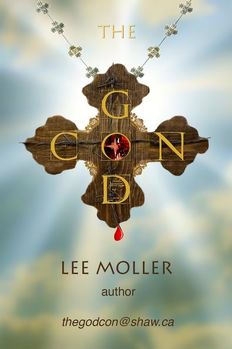
 RSS Feed
RSS Feed